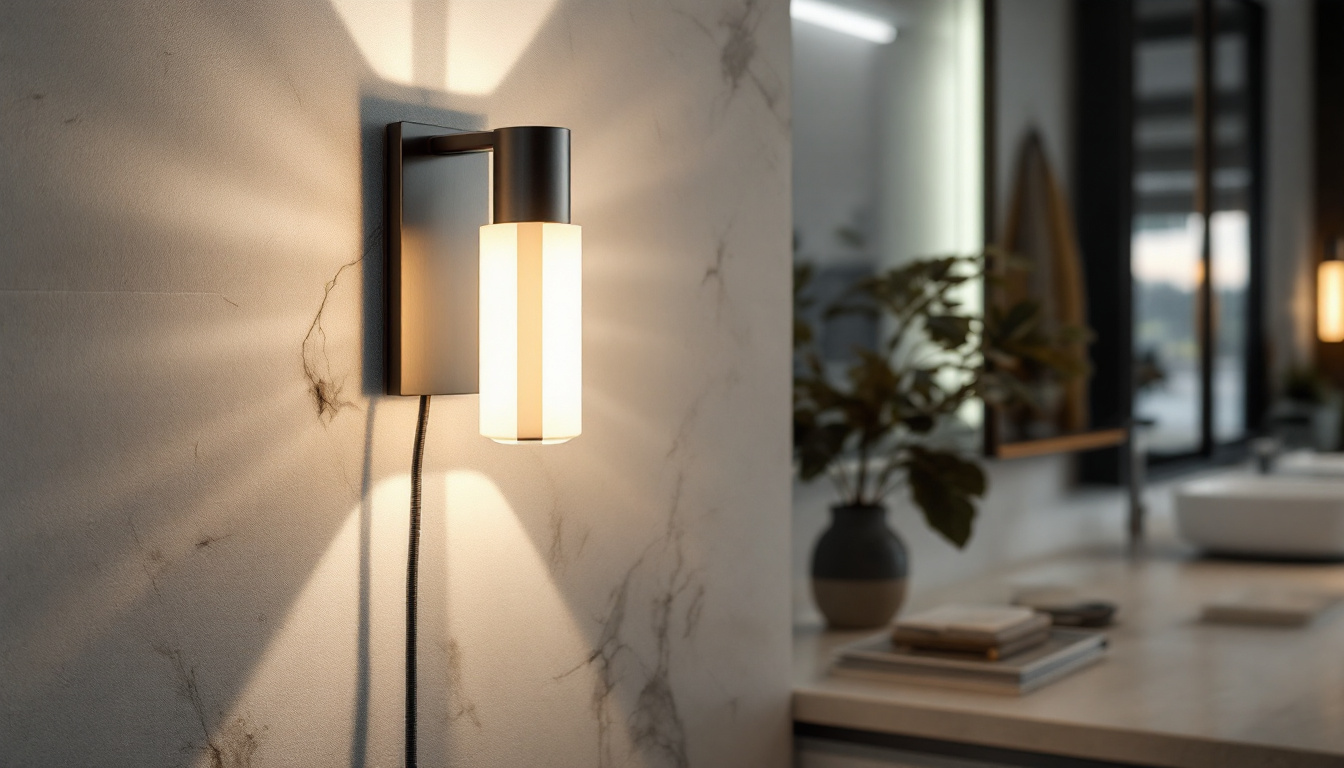
Lighting is an essential aspect of any construction or renovation project, and for lighting contractors, understanding the nuances of ceiling light installation can significantly impact the quality of their work. This article aims to provide expert advice tailored specifically for lighting contractors, covering various aspects of ceiling light installation, design considerations, and common challenges faced in the field.
Ceiling lights come in various types, each serving unique purposes and aesthetic preferences. Familiarity with these types is crucial for lighting contractors to effectively meet client needs and expectations.
Flush mount lights are designed to sit directly against the ceiling, making them ideal for spaces with low ceilings. They provide a clean, unobtrusive look while delivering ample illumination. When selecting flush mount fixtures, consider the size of the room and the brightness required. A well-chosen flush mount can enhance the overall ambiance without overwhelming the space. Additionally, many flush mount designs now incorporate energy-efficient LED technology, which not only reduces energy consumption but also offers a longer lifespan compared to traditional bulbs. This makes them a practical choice for homeowners looking to minimize their environmental impact while still achieving a stylish look.
Recessed lighting, or can lights, are installed into the ceiling, creating a streamlined appearance. They are perfect for highlighting specific areas or features within a room. lighting contractors should be aware of the various trim options available, as these can dramatically affect the light’s distribution and intensity. Proper placement is essential; spacing fixtures evenly can help avoid dark spots and ensure uniform lighting. Furthermore, recessed lights can be equipped with dimmers, allowing homeowners to adjust the brightness according to the time of day or occasion. This versatility makes recessed lighting an excellent choice for living rooms and home theaters, where mood lighting can enhance the viewing experience.
Pendant lights hang from the ceiling and can serve both functional and decorative purposes. They are particularly effective over kitchen islands, dining tables, or entryways. When recommending pendant lights, contractors should consider the height of the ceiling and the desired visual impact. A cluster of pendants can create a stunning focal point, while a single pendant can provide subtle elegance. Additionally, pendant lights come in a variety of styles, from industrial to modern, allowing homeowners to express their personal taste. Customizable options, such as interchangeable shades or adjustable lengths, can further enhance their appeal, making them a versatile choice for various interior designs. Moreover, incorporating smart technology into pendant lighting can offer convenience, allowing users to control brightness and color temperature through their smartphones or voice-activated devices, seamlessly blending functionality with style.
Designing an effective ceiling lighting scheme involves more than just selecting fixtures. It requires a comprehensive understanding of the space, the intended use, and the desired atmosphere. The right lighting can transform a room, enhancing its functionality while also contributing to its aesthetic appeal. Therefore, it is essential to consider factors such as the size of the room, the height of the ceilings, and the color palette of the decor when planning a lighting design.
Layering light is a fundamental principle in lighting design. It involves combining ambient, task, and accent lighting to create a balanced and functional environment. Ambient lighting provides overall illumination, while task lighting focuses on specific activities, such as reading or cooking. Accent lighting highlights architectural features or artwork. For contractors, educating clients on the importance of layering can lead to more satisfying results. For instance, in a dining area, a chandelier can serve as the ambient light source, while strategically placed wall sconces can provide accent lighting that enhances the room’s character. Additionally, incorporating dimmers allows for flexibility in adjusting the light levels, making it easier to shift the mood from a bright, lively gathering to a more intimate setting for dinner parties.
Choosing the right color temperature and brightness is crucial for achieving the desired mood in a space. Warm white light (2700K-3000K) creates a cozy atmosphere, while cool white light (4000K-5000K) lends a more energetic feel. Lighting contractors should advise clients based on the room’s function; for instance, warmer tones are often preferred in living areas, while cooler tones may be more suitable for workspaces. Furthermore, the color rendering index (CRI) of the bulbs should also be taken into account, as higher CRI values (above 90) ensure that colors appear more vibrant and true to life. This is particularly important in areas like kitchens or art studios, where accurate color representation is essential for both functionality and aesthetics.
In today’s eco-conscious market, energy efficiency is a significant consideration for many homeowners. Contractors should be knowledgeable about LED options, which offer longevity and lower energy consumption compared to traditional incandescent bulbs. Additionally, integrating smart lighting systems can enhance energy savings and provide clients with greater control over their lighting environment. These systems can be programmed to adjust automatically based on the time of day or occupancy, ensuring that lights are only used when needed. Moreover, educating clients about the benefits of daylight harvesting—using natural light to supplement artificial lighting—can further promote energy efficiency. By strategically placing mirrors and using light-colored surfaces, contractors can help maximize the impact of natural light, creating a brighter, more inviting space while reducing reliance on electric lighting.
Proper installation is paramount to the success of any lighting project. Following best practices can help ensure safety, functionality, and aesthetic appeal.
Before installation, thorough planning and layout are essential. Contractors should create a lighting plan that outlines the placement of fixtures based on the room’s dimensions and intended use. Utilizing software tools can assist in visualizing the layout and making adjustments as needed. Additionally, considering the location of electrical outlets and existing wiring can streamline the installation process.
Safety should always be a top priority during installation. Contractors must adhere to local electrical codes and regulations, ensuring that all wiring is up to standard. Using appropriate tools and protective gear can help prevent accidents. Moreover, it is advisable to turn off power at the circuit breaker before beginning any electrical work, minimizing the risk of shock or injury.
After installation, testing the lighting system is crucial. Contractors should check for proper functionality, ensuring that all fixtures operate as intended. Adjustments may be necessary to achieve the desired lighting effect. This step not only enhances client satisfaction but also demonstrates professionalism and attention to detail.
In many cases, contractors must work with existing infrastructure, which can present challenges. Older homes may have outdated wiring or insufficient support for new fixtures. In such situations, contractors should assess the current setup and determine whether upgrades are necessary. Communicating these requirements to clients upfront can prevent misunderstandings later in the project.
Managing client expectations is crucial in any contracting work. Lighting contractors should engage in open communication throughout the project, discussing design choices, timelines, and potential obstacles. Providing clients with realistic timelines and being transparent about any changes can help build trust and ensure a positive working relationship.
Design changes can occur at any stage of a project, often leading to complications. Contractors should be flexible and prepared to adapt their plans accordingly. Whether it’s a change in fixture selection or a shift in layout, maintaining a positive attitude and clear communication can help navigate these challenges effectively.
The lighting industry is constantly evolving, with new technologies and design trends emerging regularly. Staying informed about these changes is essential for contractors looking to remain competitive.
Advancements in lighting technology, such as smart lighting systems and energy-efficient LEDs, are transforming the way contractors approach projects. Familiarity with these technologies allows contractors to offer innovative solutions to clients. Additionally, understanding the benefits and limitations of new products can help contractors make informed recommendations.
Design trends also play a significant role in lighting choices. Minimalist designs, vintage aesthetics, and eco-friendly options are currently popular among homeowners. Contractors should keep an eye on these trends and be ready to incorporate them into their projects. This knowledge not only enhances the contractor’s credibility but also aligns their services with client preferences.
Participating in workshops, trade shows, and online courses can provide valuable insights into the latest industry developments. Networking with other professionals can also lead to new ideas and collaborations. By prioritizing continuing education, lighting contractors can enhance their skills and stay ahead in a competitive market.
Ceiling light installation is a multifaceted aspect of lighting contracting that requires a blend of technical knowledge, design sensibility, and effective communication. By understanding the various types of ceiling lights, implementing best practices during installation, and staying updated with industry trends, lighting contractors can deliver exceptional results that meet and exceed client expectations.
As the demand for innovative and energy-efficient lighting solutions continues to grow, contractors who embrace these principles will not only enhance their skill set but also position themselves as trusted experts in the field. With a commitment to quality and a focus on client satisfaction, lighting contractors can illuminate spaces in ways that transform environments and elevate experiences.
Ready to elevate your lighting projects with superior quality and unbeatable value? Look no further than LumenWholesale, where we specialize in providing spec-grade lighting products at wholesale prices. Say goodbye to middleman markups and hello to a vast selection of reliable, high-performance lighting that meets the highest industry standards. With free shipping on bulk orders, LumenWholesale is your go-to source for premium lighting solutions that blend quality, affordability, and convenience. Take the next step in transforming environments and enhancing your expertise as a trusted lighting contractor. Discover Wholesale Lighting at the Best Value today and make your next project shine with LumenWholesale.

Discover the key insights lighting contractors need to meet client expectations for outdoor security lighting.

Discover the essential insights every lighting contractor needs about industrial style pendant lamps.

Discover the essential checklist for lighting contractors focusing on exterior motion sensors.

Discover the must-have tools and techniques for lighting contractors installing the Plugin Bright Wall Lamp Light in bathrooms.